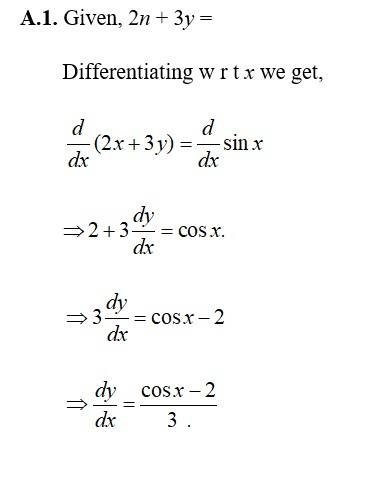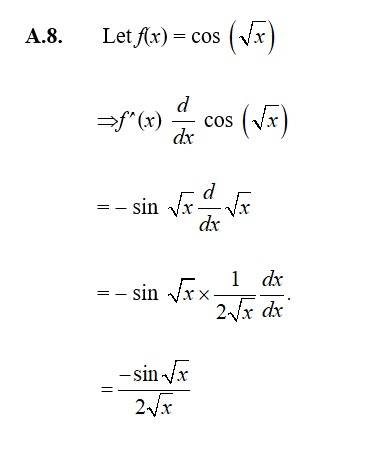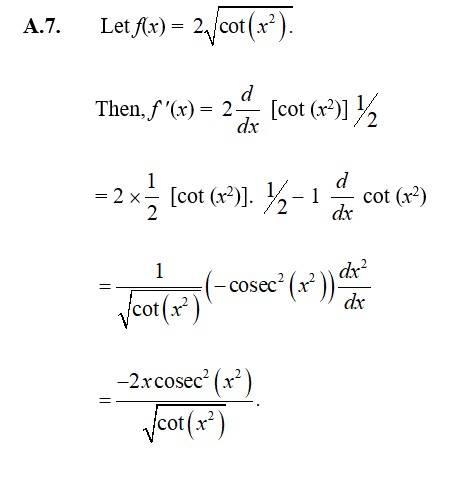Continuity and Differentiability
Get insights from 80 questions on Continuity and Differentiability, answered by students, alumni, and experts. You may also ask and answer any question you like about Continuity and Differentiability
Follow Ask QuestionQuestions
Discussions
Active Users
Followers
New answer posted
5 months agoContributor-Level 10
46. Given, ax + by2 = cos y.
Differentiating w r t 'x' we get,
= a + b 2y = - sin y + sin y = -a
=
= 2by
New answer posted
5 months agoContributor-Level 10
45. Given, 2x + 3y = sin y.
Differentiating w r t x. we get,
=cos y
=
New answer posted
5 months agoContributor-Level 10
43. The given f x n is
f(x) = 0 < < 3
At x = 1
L*H*L* =
Hence lines does not exist
Qf is not differentiable at x = 1
At x = 2
L*H*L =

Hence, limit does not exist.
Qf is not differentiable at x = 2
New answer posted
5 months agoContributor-Level 10
42. The given f x v is
f(x) = |x- 1|, x ε R
For a differentiable f x v f at x = c,
and are finite & equal.
So, at x = 1. f(1) = |1 - 1| = 0.
Now,
L*H*L* =
=
R*H*L = = - 1.
= 1
Hence, L*H*S ¹ R*H*L*
So, f is not differentiable at x = 2.
New question posted
5 months agoNew answer posted
5 months agoContributor-Level 10
39. Let f (x) = cos (x3) sin2 (x5).
f' (x) = cos (x3) sin2 (x5) + sin2 (x5) cos (x3)
= cos (x3) 2sin (x5) sin (x5) + sin2 (x5) [sin (x3)] x3.
= 2 cos (x3) sin (x5). cos (x5) (x5) - sin2 (x5) sin (x3). 3x2
= 2. cos (x3) sin (x5) cos (x5). 5 - 3x2sin2 (x5) sin (x3)
= x2 sin (x5). [2x2 cos (x3) cos (x5) - 3 sin (x5) sin x3].
Taking an Exam? Selecting a College?
Get authentic answers from experts, students and alumni that you won't find anywhere else
Sign Up on ShikshaOn Shiksha, get access to
- 65k Colleges
- 1.2k Exams
- 679k Reviews
- 1800k Answers





